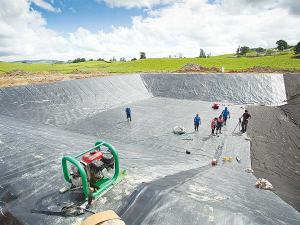Dairy sector profit still on the table, but margin gap tightens
DairyNZ’s latest Econ Tracker update shows most farms will still finish the season in a positive position, although the gap has narrowed compared with early season expectations.
 The first thing to consider when planning effluent storage is to think about how you currently farm and whether anything will change in future.
The first thing to consider when planning effluent storage is to think about how you currently farm and whether anything will change in future.
Investing in effluent storage is a significant decision on-farm, so it’s worth taking the time to carefully plan what is needed to ensure the right design for your farm.
Current and future considerations
The first thing to consider when planning effluent storage is to think about how you currently farm and whether anything will change in future.
For example, if you’re currently an owner-operator but are planning to step back and get a manager, will that affect your plans? Or if you’re planning to expand your farm or herd, will the effluent storage pond be future proofed to cope with those changes?
An effluent system can be tailored to suit a farm’s requirements. Let your system designer and installer know your needs during the initial design discussion and keep your effluent system as simple as possible. This makes it easy for staff to understand and manage.
DairyNZ has a farm dairy effluent systems planning guide with a table of options to share with your designer (see dairynz.co.nz/effluent-system).
Choose an accredited designer
Designing and installing farm dairy effluent systems is a technical job requiring specialist knowledge.
As with a number of trades, an accreditation system is in place for effluent design.
Accredited providers are trained effluent system specialists who understand and follow the Farm Dairy Effluent (FDE) Code of Practice and design standards when designing and installing systems.
DairyNZ established the accreditation programme. Look for the green tick logo when selecting a dairy effluent system company. A full list of accredited FDE companies is available online at effluentaccreditation.co.nz
Gather your core information
When planning effluent storage, work with your designer to create one that’s suited to your needs and property. Some things to discuss and provide information on include:
consent requirements
soil type (soils can be either high or low risk for effluent application)
daily water use in the farm dairy
your budget
your farm management and how you want to apply effluent
the pond site – including distance from the cow shed and line of sight to houses
your preferences for the storage type
effluent solids management
safety management
siting the electricity connection.
To ensure that everyone is clear, check that the quote includes key requirements above such as the site, pond type, storage capacity and electricity.
Calculate how much storage is needed
Your designer can calculate how much effluent storage is needed, based on factors including location, soil type, effluent application, shed type and water use.
A report can show you how this figure was calculated. Regional councils usually prefer to see the calculation to ensure the storage meets regional rules or resource consent conditions. Some councils will only accept system design and storage calculations from an FDE accredited company.
It’s a good idea to have a little more storage than your calculations show. The Dairy Effluent Storage Calculator will give the best results on-farm by allowing for deferred irrigation and ensure you don’t run out of space.
If you want an independent storage calculation, an FDE accredited company that is not a product supplier or a Dairy Effluent Warrant of Fitness assessor can provide this service (see effluentaccreditation.co.nz and www.effluentwof.co.nz).
Training your team to use your new system
Ask your designer or installer for an operations and maintenance manual for your new system. They may also offer your team training on using the system.
Check the guide!
DairyNZ has summarised the key things to think about when planning or upgrading an effluent system, visit dairynz.co.nz/effluent
• Information supplied by DairyNZ.
Effective from 1 January 2026, there will be three new grower directors on the board of the Foundation for Arable Research (FAR).
The National Wild Goat Hunting Competition has removed 33,418 wild goats over the past three years.
New Zealand needs a new healthcare model to address rising rates of obesity in rural communities, with the current system leaving many patients unable to access effective treatment or long-term support, warn GPs.
Southland farmers are being urged to put safety first, following a spike in tip offs about risky handling of wind-damaged trees
Third-generation Ashburton dairy farmers TJ and Mark Stewart are no strangers to adapting and evolving.
When American retail giant Cosco came to audit Open Country Dairy’s new butter plant at the Waharoa site and give the green light to supply their American stores, they allowed themselves a week for the exercise.
President Donald Trump’s decision to impose tariffs on imports into the US is doing good things for global trade, according…
Seen a giant cheese roll rolling along Southland’s roads?